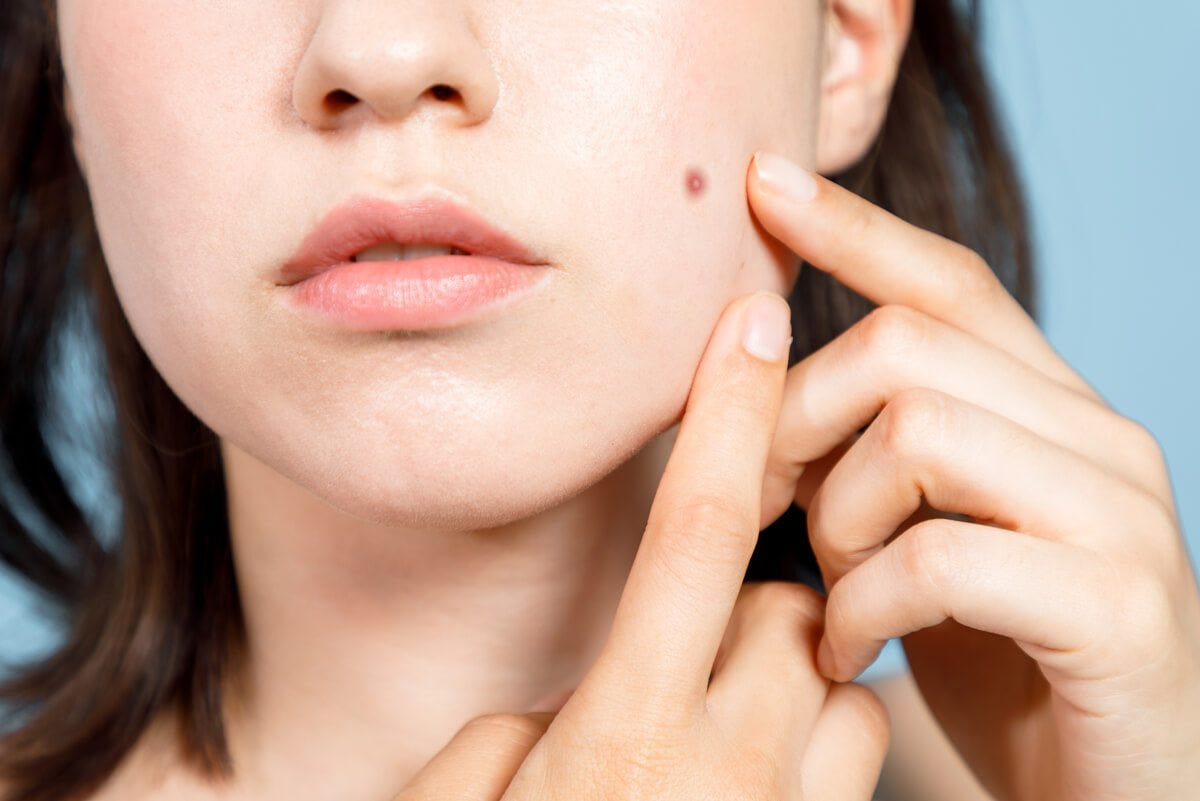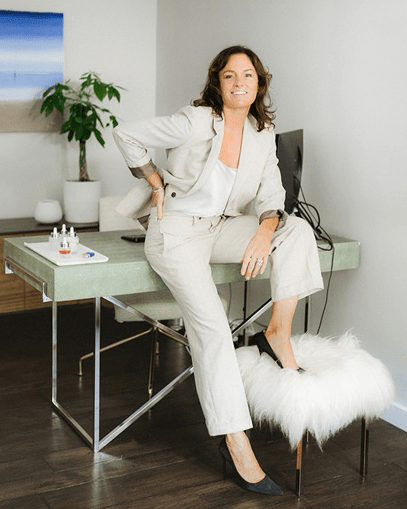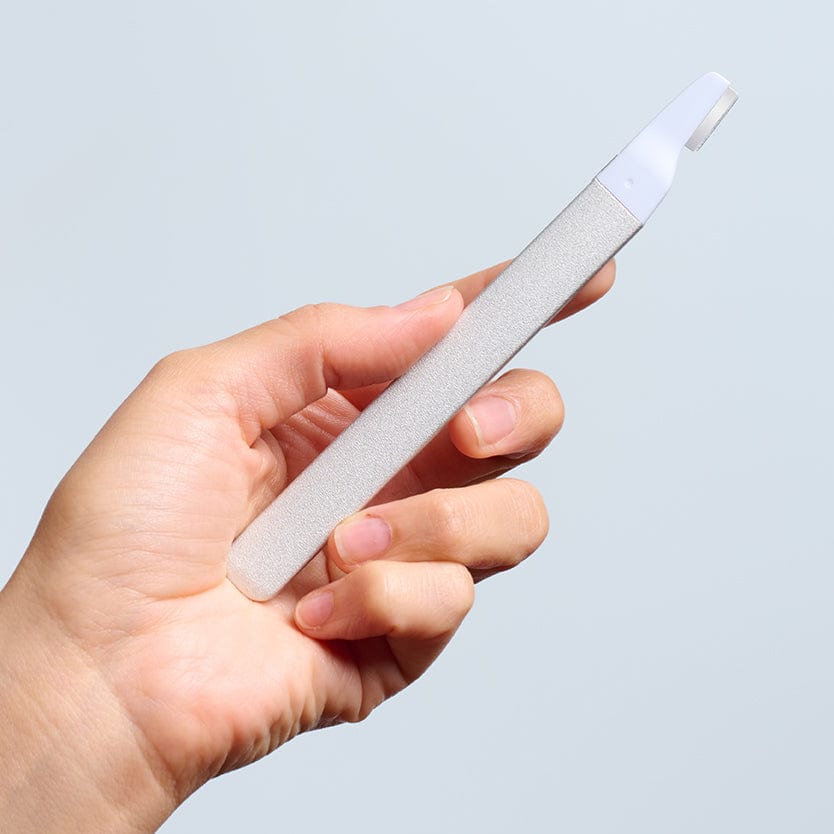Acne 101
Written by Kerry Benjamin

Hormonal Acne
What it Is
Hormonal acne generally occurs 7-10 days before your period when estrogen levels drop and testosterone increases, sending your sebum production into overdrive. If you’re in your early 30s and suffering from an onset of hormonal acne, don’t freak out—estrogen levels naturally drop in your late 20s and early 30s, making it more likely for you to experience hormonal breakouts.
What it looks like
Hormonal blemishes generally appear around the chin and mouth right before your period. You may notice an increase in blackheads, whiteheads, and inflamed pimples that seemingly pop up overnight.
How to Treat It
The key to treating hormonal acne is a daily skincare regimen that keeps skin clean and hydrated. Use our TCA Multi-Acid Face Peel about 10 days before your period to help remove pore-clogging skin cells and excess sebum.
Acne Cosmetica
WHAT IT IS
Comedonal acne is a very common skin concern and usually a sign that skin cell turnover is slow and sebum production is high. It manifests as clogged pores and most often appears on the forehead, nose and chin. It can be exacerbated by heavy makeup, hair products, dirty makeup brushes, and cell phones.
WHAT IT LOOKS LIKE
Comedonal acne usually appears as many small blemishes or bumps around oily areas like the T-zone, jawline, or hairline.
HOW TO TREAT IT
Luckily, Comedonal acne is relatively easy to treat. Check your makeup and hair products for pore-clogging ingredients, clean your makeup brushes and pillowcases regularly, and keep skin exfoliated with our TCA Multi-Acid Face Peel to prevent dead skin and sebum build-up.
Inflammatory Acne
WHAT IT IS
Inflammatory acne can be amongst the most painful and embarrassing types of acne. It is often a combination of bacteria growth and an intense inflammatory response.
WHAT IT LOOKS LIKE
Think of red blemishes, whiteheads, and inflamed blackheads. Skin with inflammatory acne looks and feels painful.
HOW TO TREAT IT
Inflammatory acne can be tricky because it’s usually a sign that the body’s inflammatory response is out of whack. Try changing your diet to an anti-inflammatory diet to see if that cuts down on redness. Some skin-friendly foods include:
- yellow and orange fruits and vegetables such as carrots, apricots, and sweet potatoes
- spinach and other dark green and leafy vegetables
- tomatoes
- blueberries
- salmon, mackerel, and other kinds of fatty fish
- pumpkin seeds
To treat existing blemishes, you’ll need to focus on eradicating acne-causing bacteria. I prefer a combination of salicylic acid and soothing anti-inflammatory ingredients, but many people choose benzoyl peroxide to kill bacteria. Be careful—benzoyl peroxide can cause major dryness and skin irritation that can only compound the issue further. We recommend using our TCA Multi-Acid Face Peel once a week to kill acne-causing bacteria with natural salicylic acid and gently exfoliates to speed up cell turnover and reduce redness and inflammation. For daily treatment to fight inflammation post-inflammatory hyperpigmentation, use our EGF Activating Serum, which promotes skin healing and cell turnover.
Cystic Acne
WHAT IT IS
Cystic acne is the most severe type of acne and is characterized by hard nodules deep within pores. It can cause severe scarring and considerable pain.
WHAT IT LOOKS LIKE
Cystic acne blemishes are large, firm, red, and usually have no visible “head” on them.
HOW TO TREAT IT
If you’re suffering from cystic acne, you should see a skincare professional for treatments at least once a month to deep clean the pores and help alleviate some of the painful inflammation. An anti-inflammatory diet can also help ease some of the redness and pain associated with cystic blemishes. Stay away from dairy and processed foods. The Acne Power Stack was designed for cystic acne sufferers. It contains our gentle TCA Multi-Acid Face Peel to promote skin sloughing and turnover, EGF Activating Serum to help skin healing, HA Hydrating Serum to feed and hydrate depleted skin, and the High Frequency Tool to kill acne causing bacteria and inflammation instantly!
Asphyxiated Acne
WHAT IT IS
Asphyxiated acne is caused by extreme skin dryness and paralyzed cell turnover. The skin isn’t properly sloughing away dead skin and pores become clogged. It is common in dry climates and can occur if you're use drying products without a proper moisturizer. It is also common among those who smoke cigarettes.
WHAT IT LOOKS LIKE
You’ll notice small bumps and a dry, rough skin texture.
HOW TO TREAT IT
This condition can be treated with exfoliation from our Deep Sea Mineral Peel and HA Hydrating Serum to speed cell turnover and keep skin plump and moisturized.
Acne Rosacea
WHAT IT IS
Rosacea is a skin disorder that causes redness over the cheeks and nose—areas where the face usually flushes. It can be accompanied by small pimples.
WHAT IT LOOKS LIKE
Very flushed skin with small, red pustules. Red blood vessels are also often visible.
HOW TO TREAT IT
Rosacea treatments vary greatly depending on the intensity of the condition. It is best to use a gentle skincare regimen high in anti-inflammatory ingredients to keep redness at bay. We recommend our TCA Multi-Acid Face Peel helps gently stimulate cell renewal without further irritating already inflamed skin. Follow it with my EGF Activating Serum, which will help diminish inflammation and promote blemish healing.
About the Author

Kerry Benjamin, a licensed aesthetician, has over 14 years of experience. Kerry is the driving force behind StackedSkincare. As the company's CEO, Kerry has dedicated her career to revolutionizing skincare. Her innovative approach combines peels, serums, and specialized tools to effectively address a wide range of skin concerns. CA LE license number Z98459.

